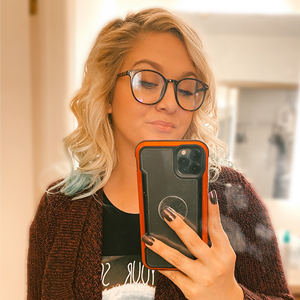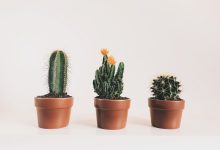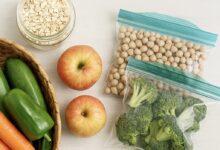
Transform your cleaning routine into a mindful and health-conscious experience with these DIY Non-Toxic Cleaning Supplies. Make your own effective and eco-friendly solutions that not only rid your space of dirt and grime but also promote a toxin-free environment.
Uncover simple recipes, sustainable ingredients, and the satisfaction of knowing exactly what goes into your cleaning arsenal. Elevate your home care with these homemade alternatives, fostering a safer, healthier living space for you and your loved ones.
DIY All-Purpose Cleaner
Ingredients:
- 1 cup distilled white vinegar
- 1 cup water
- 20 drops essential oil (e.g., tea tree, lavender, lemon)
Instructions:
- In a mixing bowl, combine the distilled white vinegar and water.
- Add 20 drops of your chosen essential oil. Essential oils like tea tree, lavender, or lemon not only add a pleasant fragrance but also contribute to the cleaner’s antibacterial properties.
- Stir the mixture well to ensure an even distribution of ingredients.
- Pour the mixture into a clean and empty spray bottle.
How to Use:
- Shake the bottle well before each use to mix the ingredients.
- Spray the DIY All-Purpose Cleaner onto surfaces such as countertops, kitchen appliances, bathroom surfaces, and more.
- Wipe down the surfaces with a clean cloth or sponge.
Additional Tips:
- This all-purpose cleaner is effective for cleaning and disinfecting various surfaces around your home.
- The vinegar helps cut through grease and grime, while the essential oil adds a pleasant scent.
- Test the cleaner on a small, inconspicuous area before using it on delicate surfaces.
- Label the spray bottle with the ingredients and usage instructions.
Enjoy the natural cleaning power of this DIY All-Purpose Cleaner, free from harsh chemicals!
DIY Citrus Degreaser
Ingredients:
- Peels from 2-3 citrus fruits (e.g., oranges, lemons, limes, or a combination)
- 1 cup distilled white vinegar
- 1 cup water
Instructions:
- Collect peels from 2-3 citrus fruits. Ensure the peels are free from fruit pulp to prevent spoilage.
- Place the citrus peels in a clean glass jar.
- In a saucepan, heat the distilled white vinegar until it’s warm but not boiling.
- Pour the warm vinegar over the citrus peels in the jar.
- Seal the jar tightly and let it sit for about a week. This allows the citrus oils to infuse into the vinegar.
- After a week, strain the liquid to remove the citrus peels. You should be left with a citrus-infused vinegar.
- Mix the citrus-infused vinegar with an equal amount of water.
How to Use:
- Pour the DIY Citrus Degreaser into a spray bottle.
- Shake well before each use to ensure the mixture is well combined.
- Spray the citrus degreaser onto greasy surfaces in the kitchen, such as stovetops, range hoods, and countertops.
- Allow it to sit for a few minutes.
- Wipe down the surfaces with a clean cloth or sponge to remove grease and grime.
Additional Tips:
- The natural acidity of citrus helps break down grease, while the vinegar acts as a degreasing agent.
- This citrus degreaser is effective, environmentally friendly, and leaves a fresh, citrusy scent.
- Label the spray bottle with the ingredients and usage instructions.
Enjoy the power of this DIY All-Natural Citrus Degreaser, perfect for tackling kitchen grease in a non-toxic way!
DIY Non-Toxic Glass and Mirror Cleaner
Ingredients:
- 1 cup distilled white vinegar
- 1 cup water
Instructions:
- In a mixing bowl, combine equal parts distilled white vinegar and water.
- Stir the mixture well to ensure thorough blending.
How to Use:
- Pour the DIY Glass and Mirror Cleaner into a clean and empty spray bottle.
- Shake well before each use to mix the ingredients.
- Spray the solution onto glass and mirror surfaces.
- Wipe down the surfaces with a lint-free cloth or paper towel for a streak-free shine.
Additional Tips:
- This simple recipe is effective for cleaning glass and mirrors without leaving streaks.
- Vinegar’s natural acidity helps break down dirt and grime, leaving surfaces sparkling clean.
- If you want a pleasant fragrance, you can add a few drops of your favorite essential oil, such as lemon or lavender.
- Label the spray bottle with the ingredients and usage instructions.
Enjoy the clarity and shine of your glass and mirrors with this easy-to-make DIY Non-Toxic Glass and Mirror Cleaner!
Baking Soda Scrub
Ingredients:
- Baking soda
- Water
- Optional: Essential oils (such as tea tree oil, lavender oil, or lemon oil) for added fragrance and antibacterial properties
Instructions:
- In a bowl, mix 1/2 cup of baking soda with enough water to form a paste. Adjust the quantities to achieve the desired consistency.
- Stir the mixture until it forms a smooth paste.
- Optional: Add Essential Oils: If you want to add a pleasant fragrance and boost the antibacterial properties of your scrub, add a few drops of your chosen essential oil. Tea tree oil is particularly known for its antimicrobial properties.
How to Use:
- Apply the baking soda scrub to the surface you want to clean or exfoliate. It can be used on kitchen surfaces, bathroom fixtures, or even as a gentle face or body scrub.
- Use a sponge, cloth, or your hands to scrub the surface in a circular motion. The baking soda will act as a mild abrasive to help remove dirt and stains.
- After scrubbing, rinse the surface thoroughly with water to remove any residue. For skin, rinse with warm water.
Additional Tips:
- For a more powerful cleaning solution, you can mix baking soda with vinegar. However, be cautious when using this combination, especially on sensitive surfaces, as the reaction between baking soda and vinegar can be quite vigorous.
- Test the scrub on a small, inconspicuous area before using it on a larger surface to ensure compatibility.
- Store any leftover scrub in a sealed container for future use.
This DIY baking soda scrub is an eco-friendly, non-toxic alternative to commercial cleaning products. It’s effective for a variety of cleaning tasks and is safe for the environment.
Disinfectant Spray
Ingredients:
- White Vinegar: White vinegar has natural antibacterial and antiviral properties.
- Distilled Water: To dilute the solution.
- Essential Oils: Many essential oils, such as tea tree oil, eucalyptus oil, lavender oil, and lemon oil, have antimicrobial properties and add a pleasant fragrance.
Instructions:
- In a clean spray bottle, mix equal parts white vinegar and distilled water. For example, you can start with 1 cup of vinegar and 1 cup of water. Adjust the quantities based on the size of your spray bottle.
- Add essential oils to the mixture for additional cleaning power and a pleasant scent. Use about 10-20 drops of essential oil per cup of liquid. Tea tree oil, in particular, is known for its antimicrobial properties.
- Secure the spray bottle cap and shake the mixture well to ensure the ingredients are thoroughly combined.
- Spray the solution onto surfaces you want to disinfect, such as kitchen countertops, bathroom surfaces, and doorknobs.
- Allow the solution to sit for a few minutes before wiping it away with a clean cloth.
Additional Tips:
- While this solution is generally safe for most surfaces, it’s a good idea to test it on a small, inconspicuous area first to ensure compatibility.
Notes:
- Essential oils not only add a pleasant scent but also contribute to the disinfecting properties of the spray. Choose oils that are known for their antimicrobial properties.
- Shake the bottle well before each use to ensure that the ingredients are evenly distributed.
- Store the disinfectant spray in a cool, dark place when not in use.
This DIY disinfectant spray is a non-toxic alternative to commercial disinfectants and is suitable for regular cleaning and sanitizing around the home. Keep in mind that while this solution can help maintain a clean environment, it might not be as potent as commercial disinfectants in certain situations, so it’s essential to practice good hygiene habits as well.
Wood Polish
Ingredients:
- Olive Oil: Acts as a natural moisturizer for the wood.
- White Vinegar: Helps to clean and disinfect.
- Lemon Essential Oil: Adds a pleasant scent and has natural cleaning properties.
- Warm Water
- Spray Bottle
Instructions:
- In a bowl, mix together 1/4 cup of olive oil and 1/4 cup of white vinegar.
- Add about 10-15 drops of lemon essential oil to the mixture. Adjust the amount based on your preference for scent.
- Stir the mixture well to ensure the ingredients are thoroughly combined.
- Add 1/2 cup of warm water to the mixture and stir again. This helps to dilute the solution and make it easier to apply.
- Pour the mixture into a clean spray bottle. This makes it convenient to apply the wood polish.
How to Use:
- Lightly spray the wood polish onto a soft, clean cloth or directly onto the wooden surface.
- Wipe the wood in the direction of the grain, spreading the polish evenly.
- Allow the wood to absorb the polish for a few minutes, then buff the surface with a dry, clean cloth to remove any excess oil.
Notes:
- This DIY wood polish is suitable for most wooden furniture, but it’s always a good idea to test it on a small, inconspicuous area first to ensure compatibility.
- Adjust the quantities based on the size of the furniture or the surface you are polishing.
- Lemon essential oil not only adds a pleasant scent but also contributes to the cleaning and refreshing properties of the polish.
- Store the wood polish in a cool, dark place when not in use.
This natural wood polish can help keep your wooden furniture looking shiny and well-maintained without the use of toxic chemicals. Regular use can also help condition and protect the wood.
Remember to test these cleaners in inconspicuous areas before widespread use, and always label your DIY cleaning solutions. Enjoy the benefits of a clean home without the worry of harmful chemicals!











Leave a Comment